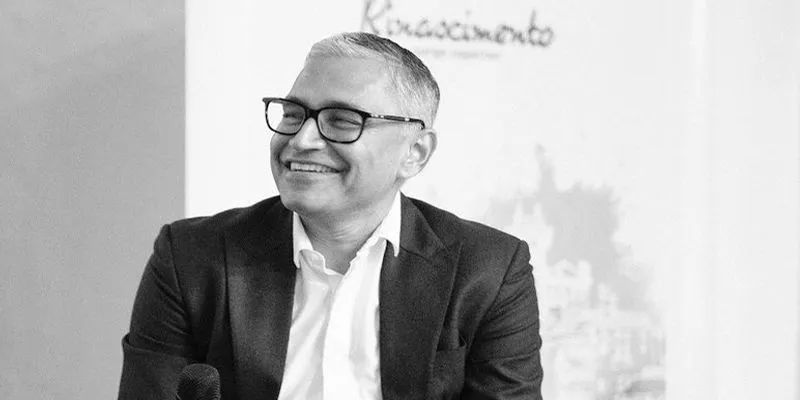From pre-Independence to post-pandemic: How 182-year-old Times Group stays relevant
The Times Group, India’s largest media conglomerate, has traversed nearly two centuries. Sivakumar Sundaram, a Times Group veteran of three decades, reveals how the business manages to stay relevant.

Sivakumar Sundaram, Chairman Executive Committee, BCCL
The Times of India was born as The Bombay Times and Journal of Commerce in 1838 in pre-Independent India. That year, Queen Victoria was formally crowned in Britain, and Bankim Chandra Chatterjee, the writer of Vande Mataram, was born in Bengal — the seat of the 19th century Indian Renaissance.
It was also the time when a slew of national and regional dailies and weeklies were started by India’s freedom fighters to galvanise the population against the British Raj. Less than two decades after the birth of Times, the Revolt of 1857 took place, redefining India’s freedom struggle.
For Times, that “ability to influence” has stayed constant even after nearly two centuries. But, the modes, means, markets, and monetisation have changed.
“Newspapers emerged for the freedom-fighting political needs. Even later, editors were catering to government and policy. Then, Samir Jain entered the business in 1975 and completely pivoted that model, which went from catering to the government to catering to consumers,” Sivakumar Sundaram, Chairman Executive Committee (CEC), Bennett Coleman & Company (BCCL), tells Shradha Sharma, Founder and CEO of YourStory, in a recent conversation.
Watch the full conversation here:
BCCL is the parent company of The Times of India (India’s largest circulated English daily), and Samir Jain is its Vice-Chairman, largely credited for setting the narrative for modern-day media, especially print, in India.
Sivakumar goes on to share,
“What did Samir Jain teach us? When everybody thought the best way to make money was to increase the cover price of the newspaper, he pushed the edit page inside, and suddenly the newspaper became an offering for consumers. Then, in 1991, when the economy opened up, marketers wanted a platform to reach out to people, and we saw the emergence of the Indian consumer class.”
“To remain relevant, we had to create colour, youth, and Page 3. We even started a Planet M music store to ensure that there is youth. Planet M may not have made money for us — similarly, the cover page doesn’t make money for us — but it keeps our audience engaged,” he says.

Times of India on August 15, 1947 | Source: Pinterest
Staying “relevant” has been the Times Group’s defining force. It has gone from being the harbinger of socio-political change in the 19th century to an enabler of nation-building in the 20th century to a platform driving India’s journey towards a digital superpower in the 21st century.
Sivakumar (known as Siva in media circles) explains,
“Our digital offering [Times Internet] is the largest [part] of the business today. This is what keeps our evolution constant. BCCL has the ability to constantly build new business models through partnerships. Our whole digital growth has happened through partnering with entrepreneurial talent. In this emerging space, we don’t claim to have all the domain knowledge. What we claim is we have the credibility, reach, connections, relationships, and the platform to fast-track.”
Siva, in his three decades at the Times Group, has witnessed a rapidly evolving mediascape. From newspaper and terrestrial television to satellite television and private radio to digital and mobile, few industries have transformed as radically as the media. But he believes that “every platform has an intrinsic native appeal” and hence, will continue to coexist with others.
“Every platform has repurposed and reimagined content, managed to aggregate an audience, and build loyalty for them. All have different models of engagement. The key is you have to engage with the consumer in that environment, mood, ambience, and emotion to stay relevant,” Siva says.
“And you have to listen to the sound of the consumer. It is never a loud noise, it is a faint, discerning signal. You have to be patient to listen to that,” he adds.

Photo: Twitter
Media’s post-pandemic challenges
COVID-19 has fundamentally changed a lot of things. No sector has been spared from the perils of the pandemic.
BCCL believes that the media, which competes for consumer eyeballs, will go through a kind of cleansing now. Those that are “authentic” and “credible” will survive and even thrive post the crisis. Those that are “fake” will perish.
Siva explains,
“Media has always been about grabbing a share of attention. This challenge was compounded by a time-poor economy pre-COVID-19. But COVID-19 has replaced all travel-based distractions. It has suddenly enriched our lives with plenty of time. The change in behaviour [of consumers] is palpable and there is a clamour for the significant. As we start to value our time, we will transcend the frivolous and seek the significant. So, the competition [in the media] would be on the ability to influence.”
“A well-researched piece of infotainment or creatively engaging content will be able to command a disproportionate share of our attention,” he says.

Photo: Shutterstock
Earlier this year, the Times Group partnered with the Dainik Bhaskar Group to launch a WhatsApp-based campaign against fake news. The initiative titled Kaun Banega, Kaun Banayega seeks to tackle the menace of fake news with humour, and establish the importance of reading a newspaper in the youth.
Siva, who’s spearheaded the initiative, shares,
“In a time-poor economy, a 20-second video is more popular; WhatsApp is more popular. But there is a challenge with user-generated content (UGC). Traditional mediums have a large workforce and their role is to curate, check for credibility and authenticity. Contrast this with frivolous and fake UGC. So, the idea was to bring out the dangers of not relying on credible news, but in a humorous way.”
The Times Group reckons that “caution, fear, and suspicion will define” humans post the pandemic. Therefore, they are likely to crave trust, credibility, and the source of news.
“The most sought-after would be platforms that are credible. People will look up to them for directions and opportunities. The media will have a chance to turbocharge the economy with responsible journalism away from fuelling fear and panic,” says the CEC.
Monetising businesses in India
Many people believe that while it is easy to launch things in India, but it is difficult — and sometimes even impossible — to monetise them.
Sivakumar offers a unique analogy to explain the monetisation conundrum.

Photo: Times Internet
He says,
“Whenever we talk of monetisation, we always look at the West to mimic. In the West, products are cheap, but services are expensive because manpower is expensive. But India is a very different market; it is the reverse. In India, if anything breaks down, you will call a mechanic to fix it. In the West, you will replace the product because it is cheaper to do that."
"Therefore, the subscription concept is not going to work in India. Netflix is great, but we know that the number of [India] subscribers on Netflix is marginal," he adds.
Even though there’s been a surge of subscription-led services in recent years, Siva says, “I’m not a fan of subscription models. Therefore, we had to be very careful when we built the monetisation models. The question is how deep the consumer engagement is. Based on the consumer psyche and time available, monetisation follows. But India is not a great market for subscription.”

Image: MX Player | Twitter
Even though the media landscape is getting increasingly cluttered, BCCL believes that all mediums can co-exist because each is a different experience.
“It is not one versus the other. Every medium has its place. There is no doubt about it. Each media platform is an experience. Like Starbucks and Udupi aren’t just about coffee; it is an experience. Similarly, at every price and time point, there is a product or service available. Whether you have five seconds or 15 minutes or one hour, there has to be a media offering available,” Siva says.
He also underscores the importance of keeping one’s ears on the ground through visiting campuses and feeling the pulse of the youth.
“You have to keep engaging with the new consumers of the country and constantly pivot your business model to remain relevant. If you keep isolating yourself from the younger generation, one fine morning, you will find that your business has disappeared,” he says.
1566726608781.jpg?fm=png&auto=format)
Photo: Gaana (owned by Times Internet)
Challenges and opportunities in tough times
In the aftermath of the black swan event that is COVID-19, businesses across the globe are waging a battle for survival. It has been said that 2020 is not the year for profits, but the year to stay “alive”.
Siva observes,
“For the wheels of the economy to move, money has to keep moving. Now, the money supply has stopped. Revenue slowdown is very different from revenue disappearing. No one has seen this kind of crisis. So, you have to prolong the sunset of the cash you have.”
He shares how even essential services too are struggling with high cost of procurement and hindrances in the path of service delivery. “The cost of supply is much more than in the normal state. Procurement is a challenge because supply chains are disrupted. Are any of us making money? Clearly, the answer is no. But we are all doing our best to keep the wheels of the economy moving,” Siva reveals.

BCCL says media can turbocharge India's economic recovery
For large organisations like BCCL, which has a 11,000-strong workforce, the cash burn is enormous. The conglomerate’s current focus is to minimise that burn. “A lot of new-age businesses were already cash-burning. But now, even profit-generating businesses will go into that zone,” he says.
However, he observes that humans have learnt to live frugally. “We have surprised ourselves as to how small our needs can be,” Siva notes.
And that will determine a lot of future decision-making, according to BCCL.
Siva explains,
“A lot of assumptions have changed now. Earlier, we thought we couldn’t produce a newspaper without an office desk. Today, our colleagues and editors are working relentlessly and bringing out a newspaper from home. So, work from home will be the new normal, and organisations will clamour to save costs on rentals and infrastructure.”
As India’s largest media conglomerate, BCCL will continue to focus on “new, unexpected opportunities” as consumer behaviour changes. “This crisis has opened up those possibilities,” says the chairman.
Edited by Saheli Sen Gupta





![[Startup Bharat] In a quest to spot fake news, these IITians started Lokal, a YC-backed hyperlocal content startup](https://images.yourstory.com/cs/2/3fb20ae02dc911e9af58c17e6cc3d915/SB2-1591190140674.png?fm=png&auto=format&h=100&w=100&crop=entropy&fit=crop)






